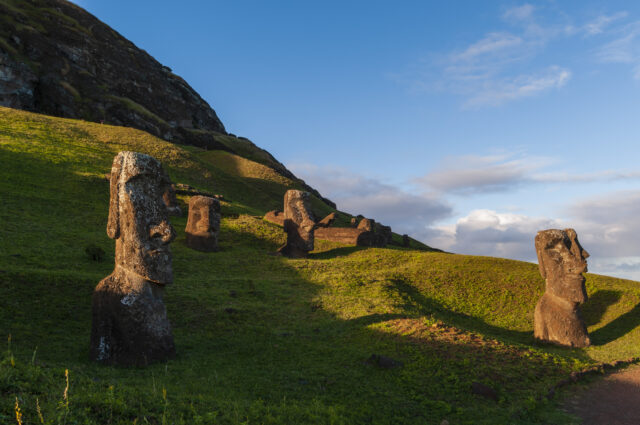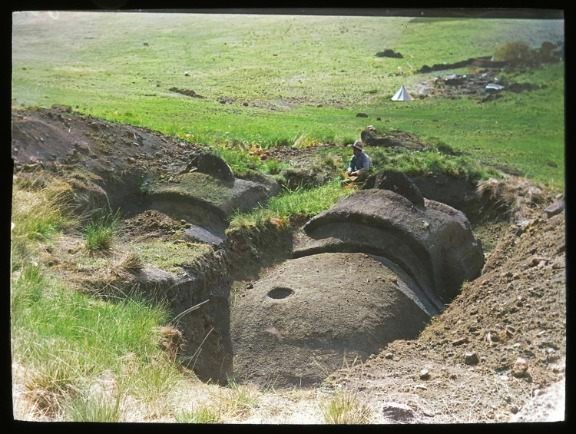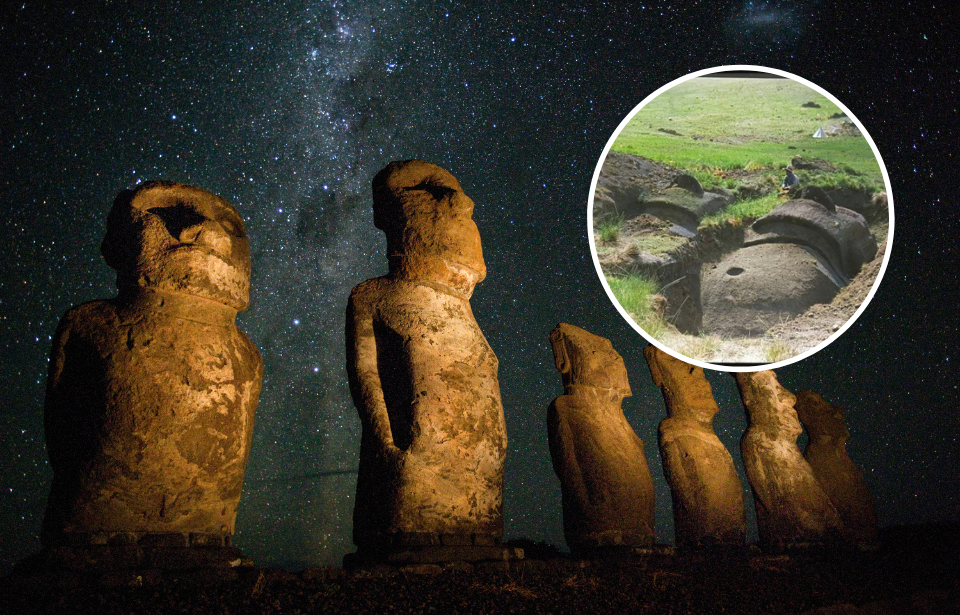A new moai statue has been discovered, presenting the possibility that more may be located in previously-unreachable locations on Easter Island. Adding to the already-vast collection, the statue marks an important archaeological find, although also serves as a double-edged sword, as it was only located thanks to climate change.
New moai statue discovered on Easter Island
A new Moai stone statue has been uncovered on Easter Island. @reevewill has more on the rare archaeological discovery and its importance. pic.twitter.com/E0Y9QQjxQe
— Good Morning America (@GMA) February 27, 2023
The moai statues, also known as Easter Island heads, were created by the Rapu Nui people. They’ve leant themselves to the island being declared a UNESCO World Heritage Site. Over 1,000 have been found, all comprised of volcanic tuff, with an average height of 33 feet and weighing, on average, between three and five tons.
Speaking in an interview with Good Morning America, Dr. Terry Hunt, a professor of archaeology at the University of Arizona, said, “The moai are important because they really represent the history of the Rapa Nui people. They were the islanders’ deified ancestors. They’re iconic worldwide, and they really represent the fantastic archeological heritage of this island.”
A team of on-site scientific volunteers from three Chilean universities made the discovery. They’d traveled to the area to work on restoring local marshland, and found the moai statue lying on its side. At just over five feet tall, it’s one of the smallest found on the island.
“For the Rapa Nui people, it’s [a] very, very important discovery,” said Salvador Atan Hito, the vice president of Ma’u Henua. “Because it’s here in the lake and nobody knows this exists – even the ancestors, our grandparents don’t know [about] that one.”
The discovery was made at the bottom of a lake

Despite being protected by UNESCO, there are many factors that threaten the moai statues on Easter Island. Environmental threats make of the majority, including rising ocean levels, erosion and fires caused by climate change. However, while these factors threaten the statues, they also provide an “unusual opportunity” that allowed for the newest moai statue to be discovered.
The statue was found at the bottom of a dry lakebed, at the base of the Rano Raraku volcano, which dried up in 2018 as a result of climate change.
“The interesting thing is that, for at least the last 200 or 300 years, the laguna was three meters deep, meaning no human being could have left the moai there in that time,” said Ninoska Avareipua Huki Cuadros, the director of the Ma’u Henua Indigenous community, in an interview with France 24.
The location, along with the statue itself, is an important archaeological find. “We think we know all the moai, but then a new one turns up, a new discovery, and in this case, in the lake, at the statue quarry,” Hunt said. “There have been no moai found in the dry bed or in what was previously a lake, so this is a first.”
There could be more moai statues waiting to be discovered

Finding this new moai statue has archaeologists wondering if there could be more hiding in the previously-unsearchable lakebed. Now that it’s dried up, there’s new explorative opportunities.
“Under the dry conditions that we have now, we may find more. They’ve been hidden by the tall reeds that grow in the lake bed and prospecting with something that can detect what’s under the ground surface may tell us that there are in fact more moai in the lakebed sediments,” Hunt said. “When there’s one moai in the lake, there’s probably more.”
More from us: Archaeologists Unearth Roman-Era Sphinx In Egypt
The team digging in the area will also keep an eye out for any tools that may have been used to carve the moai statues. For now, the newest one will remain where it was found, with no current plans to remove it from its resting place. “You have to ask the whole Rapa Nui community what they want to do with the Moai,” Huki explained. “And the oldest people want it to remain there.”
